Quiver killer. We hear this phrase constantly, but unfortunately, no such bike truly exists. That 'perfect' bike will always be subject to the constraints of where and how it's ridden. But, a few bikes come darn close. Commencal's Meta V5 is an enduro race bike that makes a strong bid for being one of those ever-elusive unicorn bikes—a brute in a straight line with the agility and pedaling characteristics of a bike with less travel. With a new suspension platform and a geometry that sits in between Commencal's Meta V4 AM and TR models, the V5 is a new beast that brings more to the table than its already successful older brothers.
Highlights
- AL 6061 T4 & AL 6066 T4 aluminum frame
- 29-inch wheels
- 150mm (5.9-inches) of rear wheel travel // 160mm (6.3-inches) fork travel
- Virtual Contact System (VCS) suspension design
- 64.1 // 64.5 degree head angle
- 77.8 // 78.2 degree seat tube angle
- Flip-chip in lower shock mount
- Internal cable routing through the frame or headset
- Rubber downtube, bottom bracket and chain stay protection
- UDH compatible
- Sizes: S-XL
- Verified weight (large, no pedals): 35 pounds (15.8kg)
- MSRP: ~$5,800 USD (a la carte build tested)
Strengths |
Weaknesses |
|
|
Meta V5 Overview
Commencal built the Meta V5 around their latest Virtual Contact System (VCS) suspension design. A clear departure from Meta of the past five years, the V5 is available with dual 29-inch wheels and 150mm of rear travel or mixed wheels with 165mm of rear travel (Meta SX). On the upper end of mid-travel, Commencal has placed V5 in the enduro category but has chosen geometry and components that balance its pedal-ability and descending prowess. With multiple reasonably priced build options ($3,500-$6,200), it's a bike that can conform to many different riding styles and terrains.



Offered only in aluminum like all their bikes, the Meta V5 is made from a combination of 6061 and 6066 T4 aluminum. Cables are routed internally via ports on the side of the frame, or for those out there who want to risk upsetting their local mechanic, routing through the headset is possible. The frame has rubber protection on the chainstay, bottom bracket, and an optional stick-on shuttle guard for the downtube. An access port hidden beneath the bottom bracket protection makes for easy dropper cable routing. The Meta V5 continues to use a press fit bottom bracket that started creaking after about two weeks. A relatively simple fix in the grand scheme of things, but dealing with a press fit can be aggravating without the right tools. There are mounts for a water bottle on the inside of the downtube. However, fitment with a 20oz (590ml) bottle was nearly impossible with the location of the shock. A flip chip at the lower shock eyelet provides High and Low geometry configurations that vary slightly, the most notable differences being head angle and bottom bracket height.

Suspension Design
The Virtual Contact System (VCS) linkage design replaces the V4.2's linkage-driven single pivot layout. Commencal's VCS linkage works with two co-rotating links attached to a yoke that drives the shock, similar to popular designs from Santa Cruz, Pivot, and Yeti. This new system allows Commencal to really finetune the kinematics of the V5, aiming to maintain an active feel without compromising too much pedaling performance. With the Meta V5 having a yoke in its linkage, it does limit which coil shocks you can run. Commencal says you can run an Ohlins or the new RockShox coil with no issues if you want to run a coil shock on this bike.

Geometry
The Meta V5 uses pretty standard enduro geometry that's become the norm over the last few years. It's long and low, yet still balanced and familiar, easing adaptation when initially hitting the trails. Reach numbers on the large range from 475.5 to 480mm, depending on the orientation of the flip chip, and the head angle is either 64.5 or 64.1 degrees. The only size-specific dimension is small and medium frames have 5mm shorter chainstays than large and X-large frames. We rode the bike most in the high setting to compliment our moderately sloped trails that feel best with a slightly steeper, more playful setup.

Build Kits
Commencal offers six build kits for the Meta V5, starting at $3,500 and topping out at $6,200. They also offer their A La Carte program, allowing you to build from the frame up with as many components as needed. Their ALC program is a great system, as no rider is the same, and not every needs an completely new bike. We all have different opinions and preferences about bikes and components, and what feels right to us may be the wrong setup for you. We tested a blended build that was part A La Carte, part stock.
The bike came with a SRAM GX Eagle cable actuated drivetrain, FOX Factory suspension and dropper post, SRAM Code Stealth RSC brakes, and DT Swiss EX 511 rims with 350 hubs. A well-thought-out build that retails for roughly $5800, the closest build you can buy without going through the ALC program would be the $6,200 Meta V5 T-Type build. The differences between that build and what we tested are the drivetrain and brakes, with the T-Type build featuring TRP DH-R EVO brakes and SRAM's new X0 Transmission system.
On The Trail
All testing took place in southern Idaho on dry, fast, and loose trails, with a handful of weekend trips up north at Tamarack Resort. If anyone has ridden in Boise, Idaho, or Tamarack Resort, they will be very familiar with the wildly dusty and fast terrain. Every ride was in far from perfect conditions on dirt that looked like it had been imported from the moon. For those who follow or race the NW Cup Series, you know how fun and predictably unpredictable Tamarack can be.

Setup
Short of adjusting the saddle height, setting up the Meta V5 was a breeze. When we threw a leg over the bike, there was an immediate sense of comfort with where our arms fell on the handlebars. In fact, during our time aboard the V5, we never adjusted the stack or bar height. We set shock sag to 25% to match our fast and fairly smooth trails, and set compression and rebound on the fork and shock to our usual two clicks open from the middle of adjustments. The only change we made was speeding up the rebound by one click when riding at Tamarack.
There are two things worth mentioning—out of the box, the front rotor and derailleur hanger were bent, undoubtedly from shipping. Both issues were easily fixed, but remember that when ordering from a direct-to-consumer company, it is a great idea to double-check everything or have your local bike shop run through the bike.
Descending Performance
With Commencal's DH race pedigree, it is no surprise that the Meta V5 inspires confidence at speed. Even while riding at a casual pace, the bike is both poppy and fun, making it a very capable 'do it all' bike. Finding the limit of the Meta's comfort zone was not easy to do, and we usually found the edge of our comfort zone well before finding the bikes.
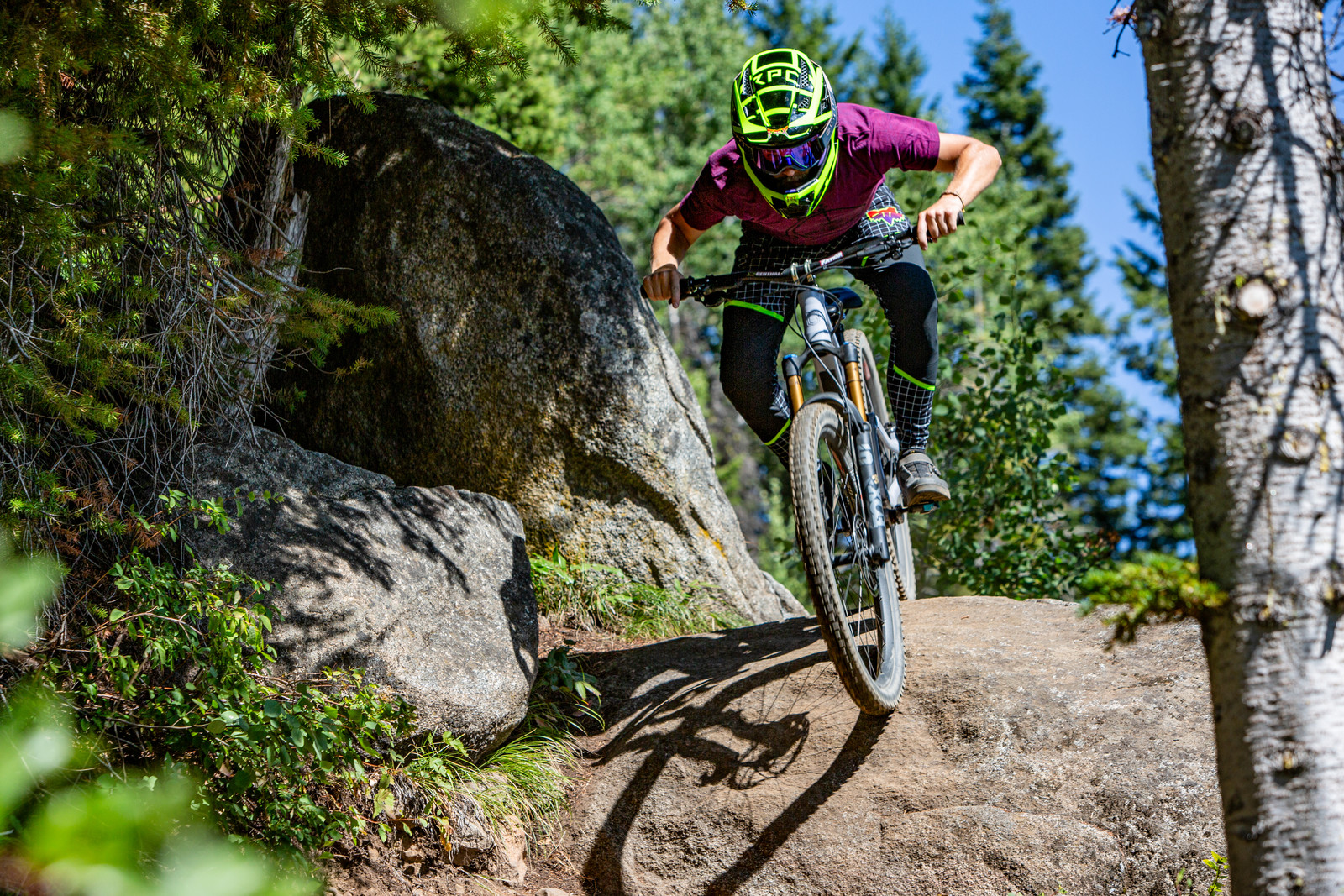
There are no real downsides to the bike with gravity at your back. If you are a point-and-shoot type of rider, the Meta can handle that. However, it is much happier with a more tactical approach to trail features. Slow up a little and treat everything as a gap or rhythm section, and it will quickly turn into a rocket ship. At 35 lbs, we questioned how well we would be able to influence and move the bike around. Those concerns quickly faded as the Meta V5 hides its weight well, handling like a quick 130mm travel trail bike with the forgiveness of an enduro race bike.
Rear Suspension Performance
The Virtual Contact design was highlighted by exceptional support. G-outs, drops, and jumps all felt spectacular and the bike never wallowed under pressure. The Meta V5 rear suspension kept our weight in that centered sweet spot for aggressive exits out of corners and jumping in and out of tech sections.
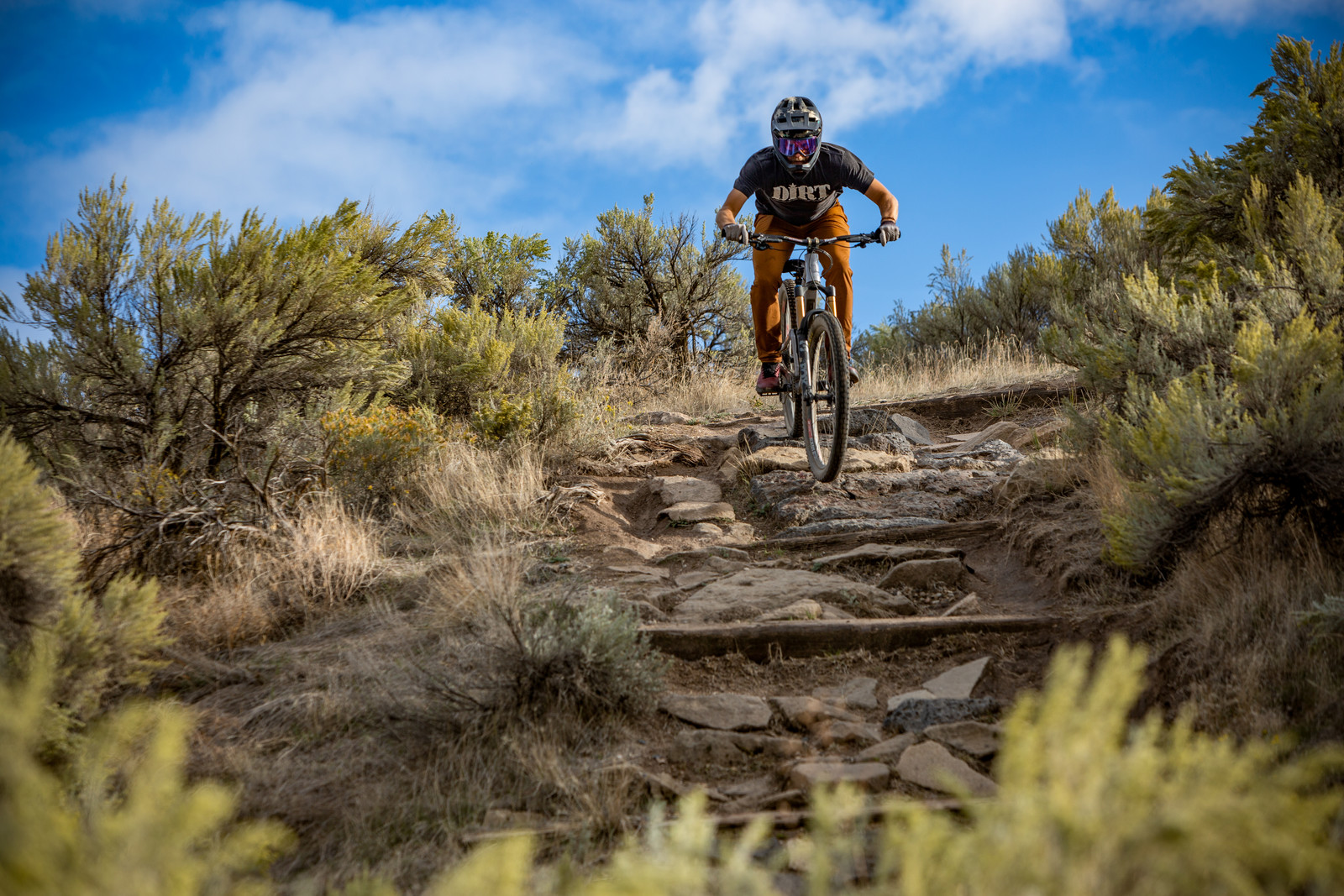
The rear end did feel a touch harsh when straight-lining rock gardens or navigating high-frequency trail chatter. Mostly a result of the more trail-orientated Float X shock, the only way to achieve a smoother ride through rougher bits of the trail would be to buy a V5 build with a coil shock or add one after-market. If you want to run a coil, keep in mind that the linkage system's leverage over the shock is high and limits riders to Ohlins or RockShox coils. If you are looking for a setup with a good balance between smooth and playful, stick with a high-volume air shock, like the new Vivid or a Float X2.
Climbing Performance
Due to the width of the rear triangle, it rubbed the inside of our legs while pedaling. Something that took a little time to adjust to and was most noticeable up technical section, we can see the constant contact being bothersome to some.
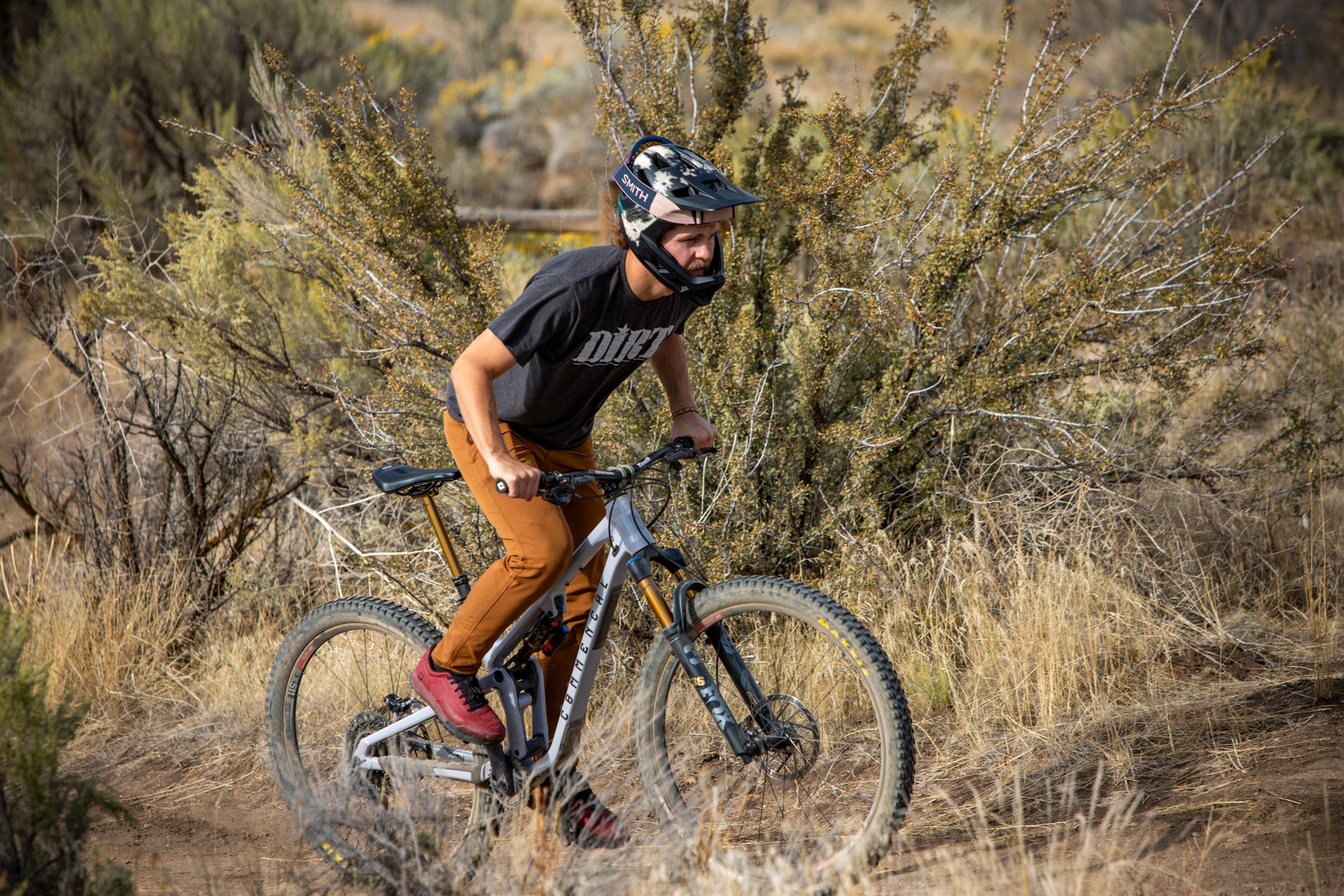
Other than that potential inconvenience, the Meta V5 was a solid climber, especially for an aluminum bike designed to descend the way it does. While a climbing switch is always welcomed, it wasn't needed when trying to keep up with local XC hammerheads. The rear suspension maintained traction and composure in slower technical climbs and was supportive enough for short sprints out of the saddle. We reached the top of climbs with plenty of energy to ride the descents the way the Meta V5 deserves to be ridden.
Geometry
The Meta V5 offered a balanced geometry package that made the bike fun to take on trail rides and big days in the bike park. The 64.5-degree head angle coupled with the 78.2-degree seat angle made for relatively easy pedaling, but the geometry showed its true colors while flowing back downhill, providing a solid riding position to attack and smash features.
The only quirk with the geometry was that the two-position flip chip didn't feel like it changed much on the trail. Luckily, we didn't feel like the bike needed any changes outside the two positions to perform well, and changes to the suspension setup have the potential to make more of a difference than any geometry adjustment would.
Build Kit
With the build we tested being a mix of stock and A La Carte parts, the ~$5,800 MSRP is on the pricier side. Especially for Commencal, as they were one of the direct-to-consumer brands that created the expectation for budget-friendly builds when buying a bike online. For an extra $400, you could buy the highest-end V5 build and upgrade to SRAM's GX Transmission and TRP DH-R EVO brakes.
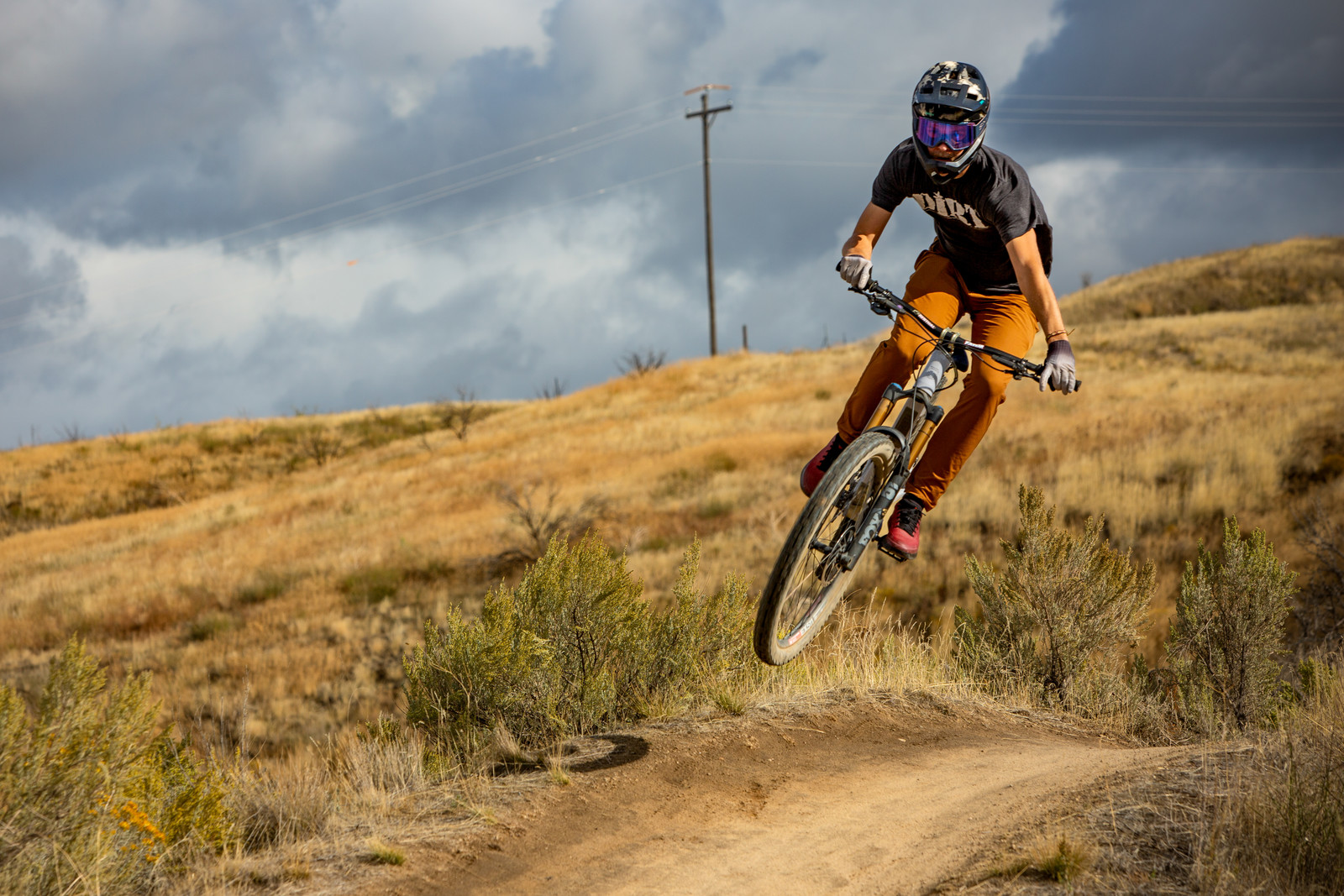
The suspension on our test bike both added to and took away from its overall performance. The FOX 36 fork and Float X shock created a more playful bike than the geometry numbers suggest. The downside was that the suspension left us feeling undergunned on more gravity-based terrain. After three solid days at the bike park, the Float X was overworked, with a small amount of fluid leaking from the seals.
Suspension choice is very important with the Meta V5 as it can dictate the strengths and weaknesses of the bike. If you plan to pedal a lot on varied terrain with minimal time spent at bike parks or scaring yourself on advanced trails, then a 36 fork paired with a smaller volume air shock is a great choice. For you gravity gurus, you will be happier with a beefed-up suspension setup to unlock the DH prowess hidden in the Meta V5.
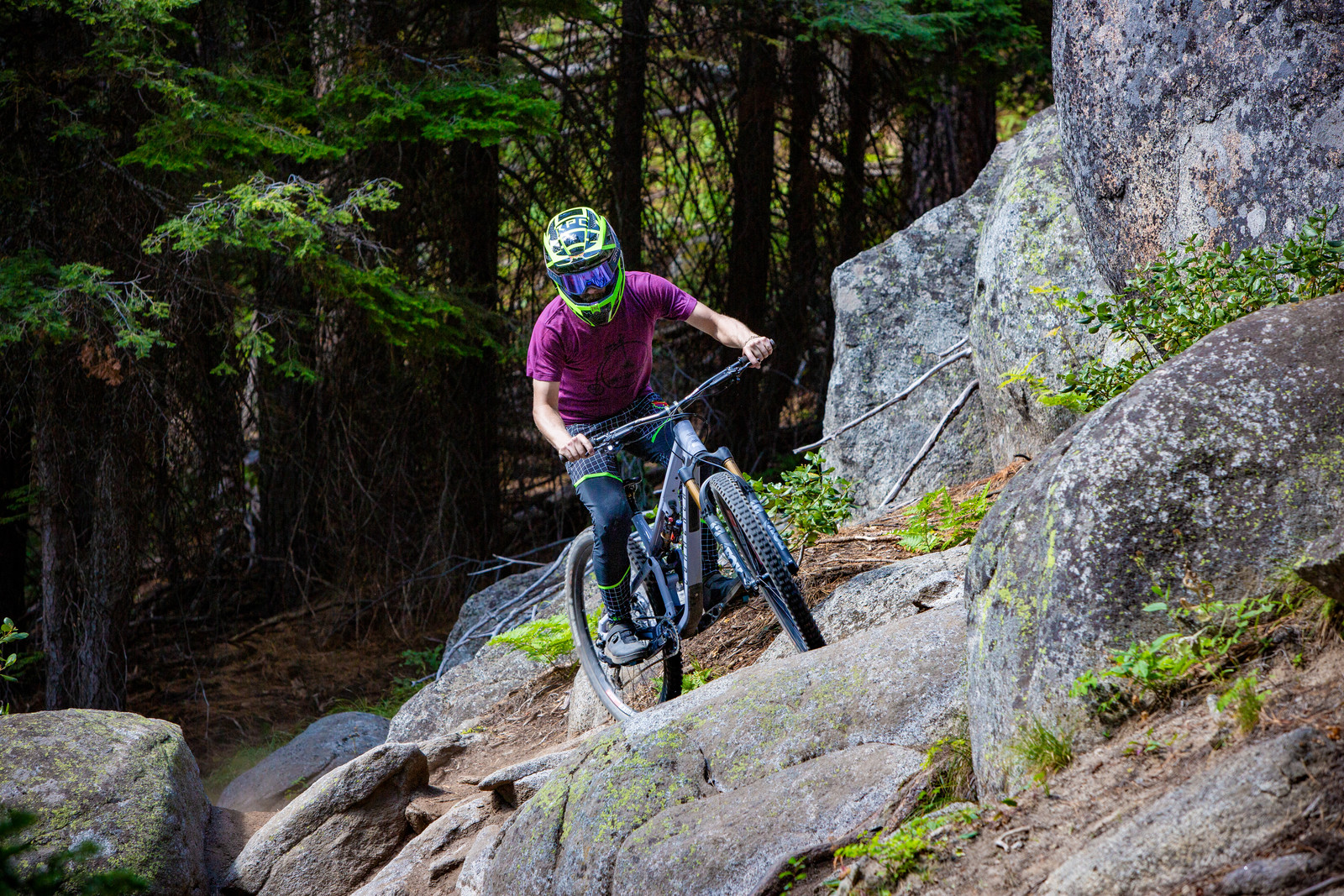
The FOX Factory Transfer 200mm dropper stopped returning fully after about two weeks and needed air added, which required almost an entire rebuild to get to the air valve. Unfortunately, we had to do that twice to keep it working correctly.
Tire performance was stellar with the Maxxis Minion DHRII 3C MaxxTerra EXO+ tires, maintaining a safe and controlled feel in our loose conditions. A faster rolling tire out back would help improve climbing speed and efficiency but would also likely do this bike a disservice on descents. The traction the tires offered was worth the little resistance they added when pedaling.
Long Term Durability
Commencal welds up some solid bikes, and the Meta V5 is no exception. If you perform standard, periodic maintenance, the V5 will last you multiple seasons, with the only concern being the potential for the press-fit bottom bracket to make noise. Luckily, we had no issues with our test bike, and there are solutions should that problem arise. We also had no issues with frame tolerances or loosening bolts, causing unwanted creaks. The paint job was tough and held up great to a summer of riding and washing, plus a few crashes. Commencal offers a 5-year warranty on the mainframes with a 2-year warranty on chain stays and Contact System suspension linkages.
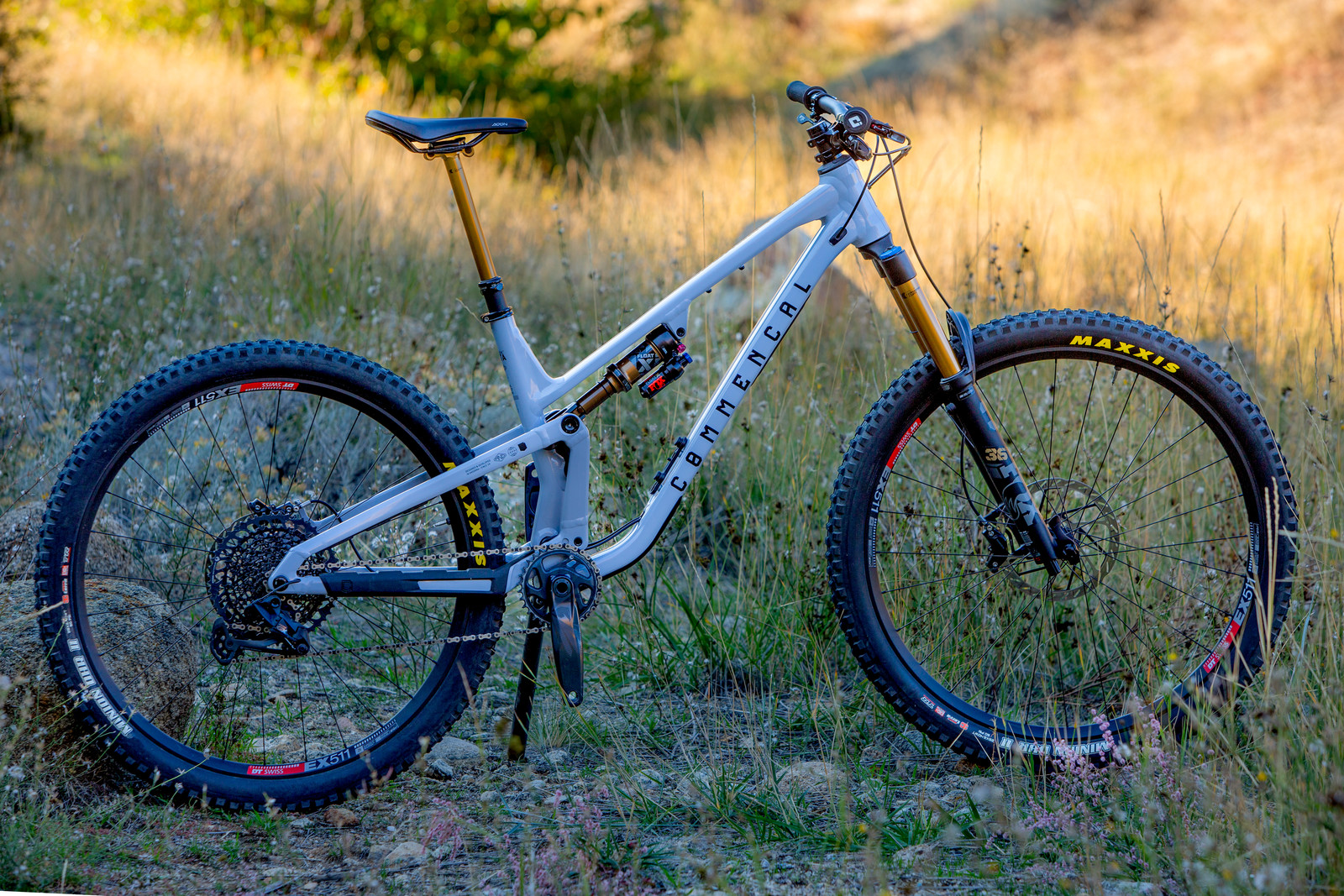
What's The Bottom Line?
"A Jack of all trades is a master of none, but oftentimes better than a master of one." While the bike industry continues to work towards that seemingly impossible ride-everything bike, the Meta V5's balanced geometry, supportive suspension design, and ability to smash or flow based on rider input will make it some riders quiver killer. Of course, with 150mm of travel, the Meta still places more eggs in the 'descending performance' basket than anything else. But its well-rounded abilities make it tough to find negatives amongst all the positives—regardless of the situation.
Vital MTB Rating
- Climbing: 4
- Descending: 4
- Fun Factor: 5
- Value: 4
- Overall Impression: 4.25
For more information, please visit commencal.com
View key specs, compare bikes, and rate the Commencal Meta V5 in the Vital MTB Product Guide.
About The Reviewer
Wyatt Lisk – Age 30 // Years Riding MTB: 12 // Height 6'1" (1.87m) // Weight: 180-pounds (81.6 kg)
A "never made it" Cat 1 downhill/enduro racer that turned to coaching groms and wrenching full-time, Wyatt immersed himself in the world of bicycles since the day his dad told him he was never allowed to ride motorcycles. A born-and-raised Idaho boy who grew up whitewater rafting (but never actually grew up), he is most likely found on the trail with his dog or at a local brewery.


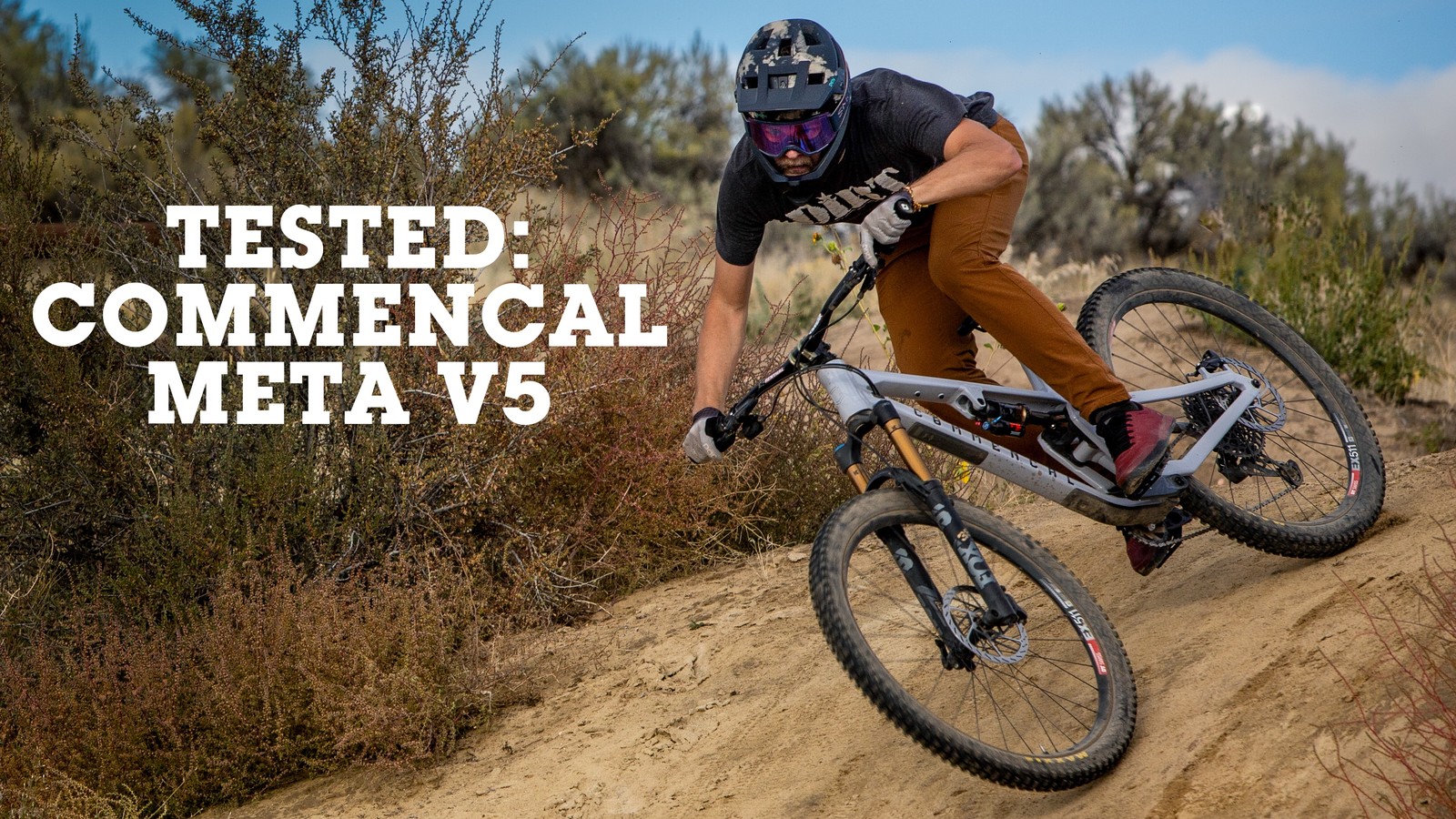




View replies to: Commencal Meta V5 Long-Term Review
Comments